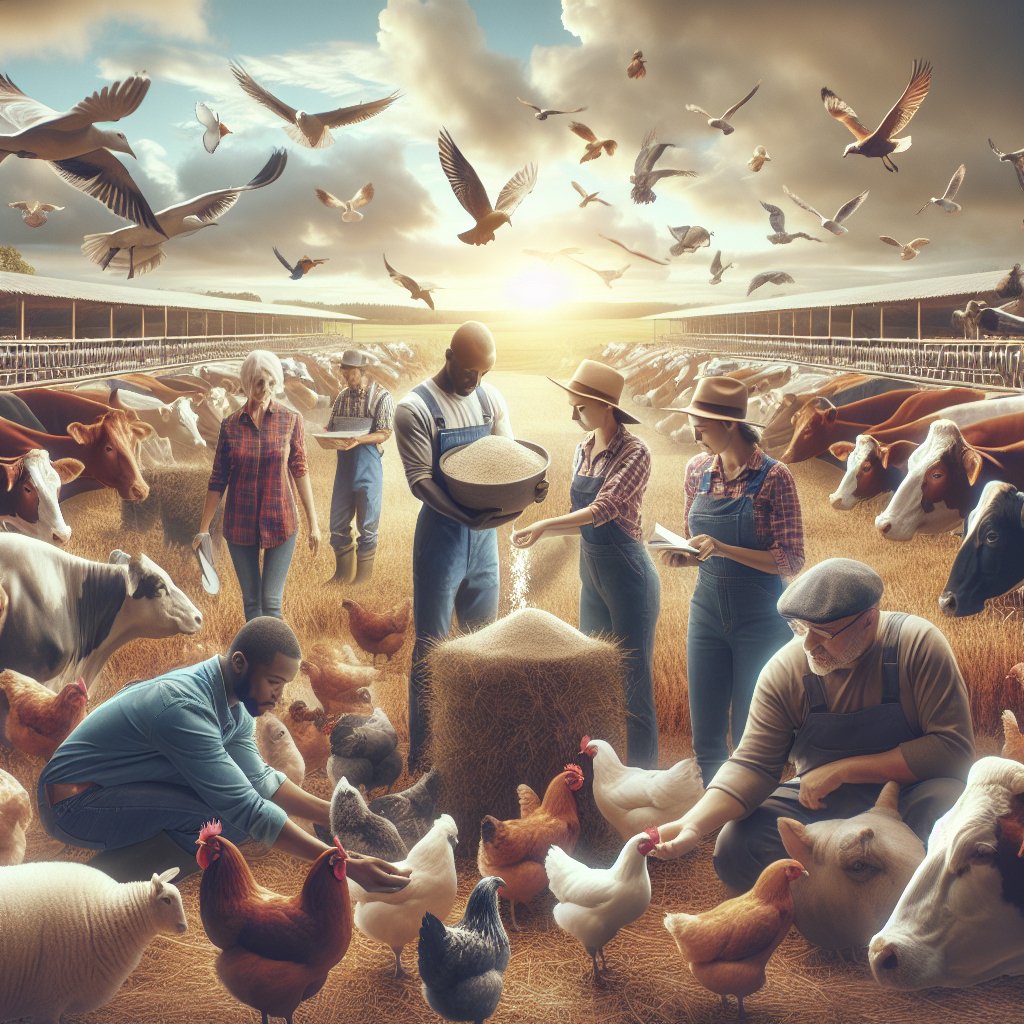
Training livestock is a crucial aspect of effective farm management, offering numerous benefits such as improved animal welfare, increased productivity, and enhanced safety for both animals and handlers. By implementing structured training programs, farmers can ensure that their livestock are well-behaved, easier to manage, and more responsive to human interaction. This article explores the various methods and strategies for training livestock, focusing on the importance of understanding animal behavior and the role of positive reinforcement in achieving successful outcomes.
Understanding Animal Behavior
Before embarking on any training program, it is essential to have a solid understanding of animal behavior. Livestock, like all animals, have specific instincts and natural behaviors that influence how they respond to training. Recognizing these behaviors can help farmers tailor their training methods to suit the needs of each species and individual animal.
One of the key aspects of animal behavior is the concept of flight zones. The flight zone is the area surrounding an animal that, when penetrated by a human or predator, causes the animal to move away. Understanding the size and shape of an animal’s flight zone is crucial for effective handling and training. For instance, cattle generally have larger flight zones than sheep, and individual animals may have varying flight zones based on their temperament and past experiences.
Another important behavioral concept is the point of balance, which is typically located at the animal’s shoulder. By positioning themselves correctly relative to the point of balance, handlers can influence the direction in which the animal moves. This knowledge is particularly useful when training livestock to move through gates, chutes, or into trailers.
Social behavior is also a significant factor in livestock training. Many farm animals, such as cattle, sheep, and goats, are herd animals and have strong social bonds. Training sessions should take into account the social dynamics of the herd, as isolating an animal from its group can cause stress and hinder the training process. Instead, training in small groups or using a lead animal can be more effective.
The Role of Positive Reinforcement
Positive reinforcement is a powerful tool in livestock training, as it encourages animals to repeat desired behaviors by rewarding them with something they find pleasurable. This method is based on the principles of operant conditioning, where behaviors are shaped by their consequences.
Rewards can take various forms, such as food treats, verbal praise, or physical affection. The key is to identify what motivates each animal and use it consistently to reinforce good behavior. For example, a cow that enjoys being scratched behind the ears may respond well to physical affection as a reward, while a pig might be more motivated by food treats.
Timing is critical when using positive reinforcement. The reward should be given immediately after the desired behavior is performed to create a clear association between the behavior and the reward. Delayed rewards can confuse the animal and weaken the training effect.
Consistency is another important factor in positive reinforcement. All handlers involved in the training process should use the same commands, cues, and rewards to avoid confusing the animals. Consistent training helps animals learn faster and retain the behaviors over time.
In addition to positive reinforcement, it is important to avoid using punishment as a training method. Punishment can create fear and anxiety in animals, leading to resistance and aggression. Instead, focus on redirecting unwanted behaviors and reinforcing positive actions.
Implementing a Training Program
Developing a structured training program is essential for achieving long-term success in livestock training. The program should be tailored to the specific needs of the farm and the animals being trained. Here are some steps to consider when implementing a training program:
- Set clear goals: Define the behaviors you want to train and the outcomes you hope to achieve. This could include tasks such as leading, loading, or standing still for veterinary procedures.
- Start with basic commands: Begin training with simple commands and gradually progress to more complex tasks. This helps build a foundation of trust and understanding between the handler and the animal.
- Use short, frequent sessions: Animals have limited attention spans, so keep training sessions short and frequent. This helps maintain the animal’s interest and prevents frustration.
- Monitor progress: Keep track of each animal’s progress and adjust the training program as needed. Some animals may learn faster than others, and it’s important to be flexible in your approach.
- Involve multiple handlers: If possible, involve multiple handlers in the training process to ensure consistency and reinforce the training across different contexts.
Conclusion
Training livestock is a valuable investment in farm management, offering benefits that extend beyond improved animal behavior. By understanding animal behavior, utilizing positive reinforcement, and implementing a structured training program, farmers can enhance the welfare of their animals, increase productivity, and create a safer working environment. With patience, consistency, and a commitment to ongoing learning, successful livestock training is within reach for any farmer.

